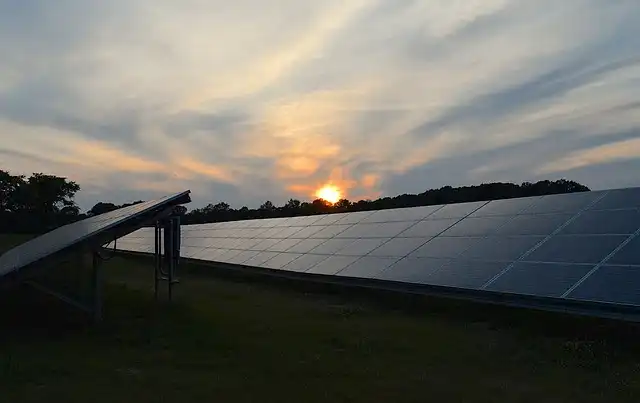Grid Batteries: Powering the Future with Energy Storage Systems

Grid batteries are revolutionizing energy storage, supporting grids with solar power and providing backup during peak demand. As EV growth slows, battery storage systems (BESS) are rapidly expanding to improve grid reliability.
” A grid battery resembles the battery in a crossbreed automobile,” Doherty said. In a crossbreed, the battery seamlessly torque loads, powers supporting functions and also drives the wheels totally making use of electrical power for short ranges and durations. The grid battery offers a comparable function: enhance and replace what the fossil-fuel energy system does.
Grid Battery Functionality
And afterwards there are also household use situations, which have existed for several years now. These home-sized variations of batteries additionally keep electricity, frequently from roof solar panels or throughout off-peak hours, and launch it later on when need is higher, electricity is more pricey, or if there’s power failure.
As EVs expand more slowly amid the Trump management’s rollback of clean energy programs and tax obligation credit reports, need for battery power storage space systems (BESS) is expanding rapidly.” A grid battery is like the battery in a crossbreed vehicle,” Doherty said. As EV need cools down in the U.S., extra battery companies and automakers are moving in the direction of stationary energy storage systems. In theory, this would let automakers like General Motors range up their battery producing operations and really have a brand-new use for those batteries (not to point out a brand-new revenue stream), while EV demand with any luck picks up over time. Grid operators prefer longevity and predictability, so power storage batteries are tuned for a much longer cycle life.
Expanding Demand for BESS
A glaring instance of this was available in Texas last summer season, when solar and batteries supported the grid throughout document warm. Solar met nearly a quarter of the state’s midday power need between June and August 2024. In the evenings, as solar output dropped, batteries stepped in to cover the gap, according to Gridstatus.io.
Texas Grid Stability
Almost 150 years after the American scientist patented the light bulb and turned on the world’s very first industrial power plant in New York City, the way electrical power is stored, dispatched and well balanced is undertaking its own revolution.
Battery Storage Revolution
These nuclear power plant or transmission grids commonly surge, surge, or cause failures. That could occur because of numerous ac system turning on at the same time throughout a warm afternoon. Or power generation itself could deal with missteps at the extremely resource, such as a thermal nuclear power plant experiencing technical grabs, clouds blocking solar ranches, or the wind all of a sudden dying down.
“The grid battery is where you’re essentially adding a barrier to the power grid,” claimed Tristan Doherty, the Chief Product Police officer of Oriental battery giant LG Energy Remedy’s power storage department, Vertech. The company is among the initial to bring the production of power storage lithium-iron phosphate (LFP) batteries to the united state as need for EV batteries lowers.
Stationary Energy Storage
As EV demand cools down in the united state, extra battery business and automakers are moving towards stationary energy storage systems. Theoretically, this would let automakers like General Motors scale up their battery making operations and in fact have a new usage for those batteries (as well as a new earnings stream), while EV need ideally picks up gradually. With batteries still being the most pricey component on an EV, they can not pay for to rest that race out.
The Electric Reliability Council of Texas, the operator of the state’s electric grid, approximated the threat of power emergency situations at 16% last year, yet that was up to much less than 1% this year after the state included 9,600 megawatts of new capability. That has to do with 3,821 megawatts of it from batteries et cetera from solar.
EV batteries live a more difficult life. Grid operators like longevity and predictability, so energy storage batteries are tuned for a longer cycle life.
You can say thanks to the development of electrical lorries for a minimum of several of this. Electric automobiles account for the biggest share of worldwide lithium-ion battery demand, according to the International Power Agency. That share was fixed at over 950 gigawatt-hours last year and is on track to go beyond a terawatt-hour this year, sufficient to power 12.5 million EVs with an ordinary pack dimension of 80 kilowatt-hours– concerning the size of your typical Hyundai Ioniq 5, for context.
They can use the exact same chemistries found in EV batteries, such as nickel manganese cobalt (NMC) or lithium iron phosphate (LFP). LFP is progressively ending up being the default option for power storage many thanks to its durability and endurance. They’re created to sustain full costs to 100% and full discharges to 0% every day for 20-odd years.
LFP Dominance in Energy Storage
The car manufacturer declares the station, which will certainly have 168 quick billing stalls when totally total by the end of 2025, isn’t connected to the grid in any way. The station is completely powered by solar, with 10 Megapack batteries on website saving an optimum of 39 megawatt hours of energy, allowing numerous billing cycles daily, all using the power of the sunlight to permit totally lasting, zero-emission driving.
Still, efforts to onshore LFP manufacturing– by business like LGES and Tesla– guarantee to profit both EVs and power storage space systems, Doherty claimed. In the meantime, tolls and profession disturbances under the Trump administration are driving up project prices and slowing down development, BNEF notes. Doherty applauded the Trump administration’s decision to protect the manufacturing tax credit reports for batteries.
“It was an admission and an understanding by the management that batteries are really purposefully crucial to develop out the power grid,” he stated. “Battery innovation, writ huge, requires to come back to the United state.
Sometimes, producers in the California Independent System Operator (CAISO) market use batteries to supply up to 30% of the state’s electrical energy throughout optimal hours, as shown in the graph above. With a mix of wind, solar and other sustainable sources, the California Power Compensation reported that the state’s primary grid got to one hundred percent clean energy (for some portion of the day) on 138 out of 151 days, or 91% of days with May.
Clean Energy Goals
As EVs grow much more gradually amid the Trump management’s rollback of tidy power programs and tax obligation debts, demand for battery power storage space systems (BESS) is growing quickly. EV sales expanded at 7.3% in the U.S. in 2024, according to Cox Automotive. At the very same time, America’s utility-scale battery storage space grew at a tremendous 66%, the U.S. Power Information Administration (EIA) reported.
Such variations can damage devices and electrical tools, and likewise trigger substantial swings in electricity prices. In such cases, big or little battery storage space systems can smooth the output, assisting keep the lights on, tools powered and costs a lot more steady, commonly without the end individuals even discovering.
Grid Battery Challenges and Solutions
Doherty stated typical LGES customers, like utility business or nuclear power plant programmers, get about 200 of these shipping containers, each of which has the storage space capability matching of 50 or 100 EVs. The bigger the battery power plant, the much more kept energy utility business can give in times of need.
The technology for power storage batteries is locked in, BNEF says; the newer installments all make use of the LFP chemistry throughout applications. LFP innovation was invented in the united state, but efficiently commercialized and swiftly progressed by Chinese battery makers.
“You can not simply create the exact same point and put it in an ESS container,” Isshu Kikuma, Power Storage Space Expert at BNEF, informed InsideEVs. “There are complicated adjustments and retrofits entailed that call for time and additionally require some resources.”
The concept goes something similar to this: as demand for EVs increases in the USA, as an example, a homemade battery sector will climb in addition to it. And as that sector expands, it will feed our various other battery-driven power demands.
California has actually gone also additionally with battery storage space. Batteries kick in after sunset, launching excess sustainable energy when demand comes to a head around 8 p.m., according to Gridstatus.io.
Today, greater than 90% of worldwide LFP production is still concentrated in China, implying the U.S. has a long road ahead prior to these batteries are made locally in large volumes and at affordable costs.
The U.S. government identifies power storage batteries right into 2 major categories: small-scale with much less than one megawatt-hour of power storage capacity, and utility-scale, with a capability of one megawatt-hour or more. Unlike in EVs, where batteries are packed right into the flat flooring, energy storage batteries look like huge delivery containers.
The manufacturing strategies are similar, so they undergo similar electrode production, cell assembly and formation processes. The smaller sized steps differ; the cells have lower power densities; the finish and mixing procedures can be various and production lines themselves might need some retooling.
1 battery technology2 electric vehicles back
3 energy storage systems
4 grid batteries
5 LFP batteries
6 renewable energy
« EV Leasing Boom: Tax Credit Deadline ApproachingDealership Car Service: Rip-offs & Hidden Mileage Tracking? »
